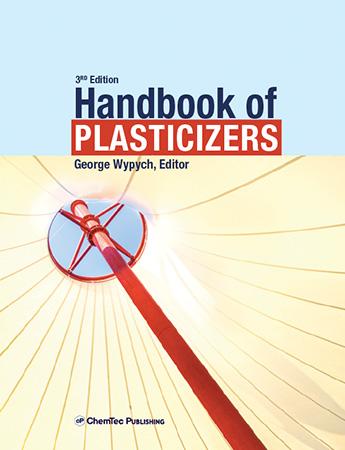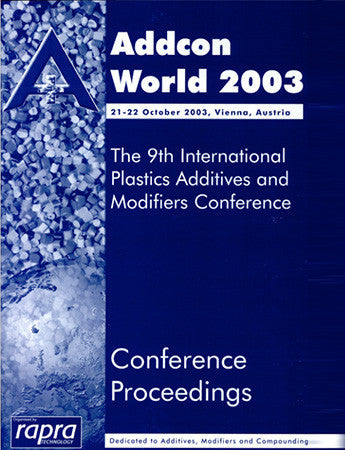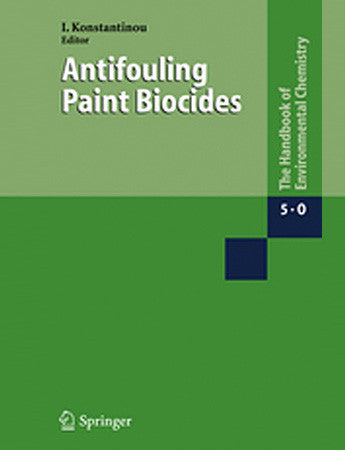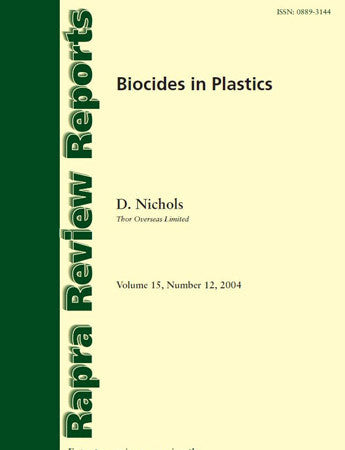This book contains a comprehensive review of information available in the open literature, such as published scientific papers, information from plasticizer manufacturers, and patent literature. The book contains information from the most recent sources and updated information from the previous editions.
The information available today permits to use plasticizers more effectively and to avoid certain plasticizers in applications where they may cause health or material durability problems. The source of raw materials used for the production of plasticizers is becoming one of the issues in the selection of plasticizers. The book contains information on plasticizers obtained from renewable resources. Plasticizer incorporation demands a broad background of information because plasticizers are now added to complex mixtures containing a variety of materials which may have different reactions to the presence of plasticizers. Plasticizer's choice is also not simple because there is a large selection of commercial plasticizers and various environmental issues dictating preferred solutions.
Both aspects considered indicate the need for a comprehensive source which, using currently available means of the computerized database should provide data and a broad background of theoretical information in the condensed form easy to search.
Numerical data on the most important plasticizers are provided in the tabular form of a printed book, entitled Databook of Plasticizers.
Data are available for a large number of commercial plasticizers. This data is used in Chapter 2 to specify typical properties of plasticizers which belong to one of the thirty-one groups. The ranges of expected properties for a given group are also given.
Chapters 5, 6 and 7 contain new and historical approaches, which explain mechanisms of plasticizers action and their behavior in plasticized systems. This theoretical background helps to understand practical observations and provides guidance to the methods of material improvement. Chapter 9 shows plasticization steps and results of various analytical studies which help in understanding these steps and parameters which may control them.
Twenty-eight sections of Chapter 10 discuss plasticizers’ effect on physical and mechanical properties of plasticized materials. These sections are essential for understanding the behavior of materials and principles of their formulation.
Chapter 11 contains data on the use of plasticizers in 61 groups of polymers. The information is grouped under the following sections – Frequently used plasticizers, Practical concentrations, Main functions performed by plasticizers, Mechanism of plasticizer action, Effect of plasticizers on polymer and other additives and Typical formulations. Use of such consistent method of data presentation helps to find information quickly and to compare data from various sources and applications.
Similar, Chapter 13 discusses the use of plasticizers in 33 groups of products according to a similar breakdown including Plasticizer types, Plasticizer concentration, Reasons for plasticizer use, Advantages and disadvantages of plasticizers use, Effect of plasticizers on product properties, and Examples of formulations. Both chapters make use of a large number of patents and information in open literature discussing the most current findings and trends.
In Chapter 14 attempts are being made to discuss the following topics: Effect of plasticizers on process conditions, Processing defects formation and elimination with use of plasticizers, Influence of rheological changes on the process, Equipment maintenance, and Energy consumption. This chapter discusses 15 methods of polymer and rubber processing.
Several chapters which follow discuss various aspects of plasticizer effect on health, safety, and environment. Chapter 17 contains opinions of renowned experts on various aspects of plasticizers effect on health and safety. Chapter 18 contains information on plasticizers persistence in soil and water. Plasticizers releases and their presence in the environment are discussed for many important commercial plasticizers.
This short review and the Table of Contents show that this book is the most comprehensive source of current information on plasticizers. Plasticizers are used in so many products that every library should have this reference source of information on plasticizers readily available for its readers. Especially considering that so many aspects of application plasticizers have recently changed that older books cannot provide right answers. This book should be used in conjunction with Plasticizer Database and/or Databook of Plasticizers which gives information on the present status and properties of industrial and research plasticizers.
Editor
George Wypych studied chemical engineering and obtained Ph. D. in chemical engineering. The professional expertise includes both university teaching (full professor) and research &development. He has published 25 books (PVC Plastisols, University Press; Polyvinylchloride Degradation, Elsevier; Polyvinylchloride Stabilization, Elsevier; Polymer Modified Textile Materials, Wiley & Sons; Handbook of Material Weathering, 1st, 2nd, 3rd, 4th, 5th Edition, ChemTec Publishing; Handbook of Fillers, 1st, 2nd, 3rd, and 4th Edition, ChemTec Publishing; Recycling of PVC, ChemTec Publishing; Weathering of Plastics. Testing to Mirror Real Life Performance, Plastics Design Library, Handbook of Solvents, 1st and 2nd Edition, ChemTec Publishing, Handbook of Plasticizers, 1st, 2nd, 3rd Edition, ChemTec Publishing, Handbook of Antistatics, 1st and 2nd Edition, ChemTec Publishing, Databook of Antistatics, 1st and 2nd Edition, ChemTec Publishing, Handbook of Antiblocking, Release and Slip Additives, 1st , 2nd and 3rd Edition, ChemTec Publishing, Industrial Solvents in Kirk-Othmer Encyclopedia of Chemical Technology (two editions), John Wiley & Sons, PVC Degradation & Stabilization, 1st and 2nd Editions, ChemTec Publishing, The PVC Formulary, 1st and 2nd Editions, ChemTec Publishing), Handbook of Material Biodegradation, Biodeterioration, and Biostabilization, 1st and 2nd Editions, ChemTec Publishing, Handbook of UV Degradation and Stabilization, 1st and 2nd Editions, ChemTec Publishing, Handbook of Polymers, 1st and 2nd Editions, ChemTec Publishing, Atlas of Material Damage, 1st and 2nd Editions, ChemTec Publishing, Handbook of Odors in Plastic Materials, 1st and 2nd Editions, ChemTec Publishing), Databook of Solvents, ChemTec Publishing, Databook of Blowing and Auxiliary Agents, ChemTec Publishing, Handbook of Foaming and Blowing Agents, ChemTec Publishing, Databook of Green Solvents, ChemTec Publishing, 2 databases (Solvents Database, 1st, 2nd, 3rd Edition and Database of Antistatics 1st and 2nd Edition, both by ChemTec Publishing), and 42 scientific papers and obtained 16 patents. He specializes in PVC, polymer additives, material durability and the development of sealants and coatings. He is included in Dictionary of International Biography, Who's Who in Plastics and Polymers, Who's Who in Engineering and was selected International Man of the Year 1996-1997 in recognition of services to education.
Related Publications
Databook of Plasticizers
PVC Degradation and Stabilization
1 INTRODUCTION
1.1 Historical developments
1.2 Expectations from plasticizers
1.3 Definitions
1.4 Classification
2 PLASTICIZER TYPES
2.1 Introduction
2.2 Characteristic properties of industrial plasticizers
2.2.1 Abietates
2.2.2 Adipates
2.2.3 Alkyl sulfonates
2.2.4 Amides and amines
2.2.5 Azelates
2.2.6 Benzoates
2.2.7 Bioplasticizers
2.2.8 Biodegradable plasticizers
2.2.9 Chlorinated paraffins
2.2.10 Citrates
2.2.11 Cycloxehane dicarboxylate
2.2.12 Cyclohexane dicarboxylic acid, diisononyl ester
Max Kron
2.2.13 Energetic plasticizers
2.2.14 Epoxides
2.2.15 Esters of C10-30 dicarboxylic acids
2.2.16 Ether-ester plasticizers
2.2.17 Glutarates
2.2.18 Hydrocarbon oils
2.2.19 Isobutyrates
2.2.20 Maleates
2.2.21 Oleates
2.2.22 Pentaerythritol derivatives
2.2.23 Phosphates
2.2.24 Phthalate-free plasticizers
2.2.25 Phthalates
2.2.26 Polymeric plasticizers
2.2.27 Ricinoleates
2.2.28 Sebacates
2.2.29 Sulfonamides
2.2.30 Superplasticizers and plasticizers for concrete
2.2.31 Tri- and pyromellitates
2.2.32 Other plasticizers
2.3 Methods of synthesis and their effect on properties of plasticizers
2.4 Reactive plasticizers and internal
3 TYPICAL METHODS OF QUALITY CONTROL OF PLASTICIZERS
3.1 Abbreviations, terminology, and vocabulary
3.2 Acid number
3.3 Aging studies
3.4 Ash
3.5 Brittleness temperature
3.6 Brookfield viscosity
3.7 Chemical resistance
3.8 Color
3.9 Compatibility
3.10 Compression set
3.11 Concrete additives
3.12 Electrical properties
3.13 Extractable matter
3.14 Flash and fire point
3.15 Fogging
3.16 Fusion
3.17 Gas chromatography
3.18 Hardness
3.19 Infrared analysis of plasticizers
3.20 Kinematic viscosity
3.21 Marking (classification)
3.22 Melt rheology
3.23 Migration
3.24 Poly(vinyl chloride) – standard specification
3.25 Powder-mix time
3.26 Purity
3.27 Refractive index
3.28 Residual contamination
3.29 Sampling
3.30 Saponification value
3.31 Saybolt viscosity
3.32 Sorption of plasticizer
3.33 Specific gravity
3.34 Specification
3.35 Staining
3.36 Stiffness
3.37 Tensile properties
3.38 Thermal expansion coefficient
3.39 Unsaponifiable contents
3.40 Viscosity of plastisols and organosols
3.41 Water concentration
3.42 Weight
4 TRANSPORTATION AND STORAGE
4.1 Transportation
4.2 Storage
5 MECHANISMS OF PLASTICIZERS ACTION
A. Marcilla and M. Beltrán
5.1 Classical theories
5.1.1 The lubricity theory
5.1.2 The gel theory
5.1.3 Moorshead's empirical approach
5.2 The free volume theory
5.2.1 Mathematical models
6 THEORIES OF COMPATIBILITY
Valery Yu. Senichev and Vasiliy V. Tereshatov
6.1 Compatibility concepts
6.1.1 Thermodynamic treatment
6.1.2 Interaction parameter
6.1.3 Effect of chemical structure of plasticizers and matrix
6.2 Solubility parameter and the cohesive energy density
6.2.1 Solubility parameter concept
6.2.2 Experimental evaluation of solubility parameters of plasticizers
6.2.3 Methods of experimental evaluation and calculation of solubility parameters of polymers
6.2.4 The methods of calculation of solubility parameters
6.2.5 Multi-dimensional approaches
6.3 Methods of plasticizer selection based on principles of compatibility
6.3.1 How much plasticizer is necessary for a polymer composition?
6.3.2 Initial experimental estimation of compatibility
6.3.3 Thermodynamic compatibility
6.4 Practical approaches in using theory of compatibility for plasticizers selection
6.5 Experimental data illustrating effect of compatibility on plasticized systems
6.5.1 Influence of compatibility on the physical stability of the plasticized polymer
6.5.2 Influence of compatibility on viscosity of the plasticized composition
6.5.3 Influence of compatibility on mechanical properties and physical properties of plasticized polymer
7 PLASTICIZER MOTION AND DIFFUSION
7.1 Plasticizer diffusion rate and the methods of study
7.2 Plasticizer motion and distribution in matrix
7.3 Plasticizer migration
7.4 Plasticizer distribution in materials in contact
Vasiliy V Tereshatov and Valery Yu Senichev
7.5 Antiplasticization
7.6 Effect of diffusion and mobility of plasticizers on their
8 EFFECT OF PLASTICIZERS ON OTHER COMPONENTS OF FORMULATION
8.1 Plasticizer consumption by fillers
8.2 Solubility of additives in plasticizers
8.3 Additive molecular mobility and transport in the presence of plasticizers
8.4 Effect of plasticizers on polymerization and curing reactions
9 PLASTICIZATION STEPS
A. Marcilla, J. C. García and M. Beltrán
9.1 Plasticization steps
9.2 Studies of plastisol's behavior during gelation and fusion
9.2.1 Rheological characterization
9.2.2 Studies by scanning electron microscopy
9.2.3 Study of polymer-plasticizer interactions by DSC
9.2.4 Study of polymer-plasticizer interactions by SALS
9.2.5 Study of polymer-plasticizer interactions by FTIR
9.2.6 Study of polymer-plasticizer interactions by
10 EFFECT OF PLASTICIZERS ON PROPERTIES OF PLASTICIZED MATERIALS
10.1 Mechanical properties
10.1.1 Tensile strength
10.1.2 Elongation
10.1.3 Hardness
10.1.4 Toughness, stiffness, ductility, modulus
10.1.5 Other mechanical properties
10.2 Optical properties
10.3 Spectral properties
10.4 Gloss
10.5 Sound
10.6 Rheological properties
Juan Carlos Garcia, and Antonio Francisco Marcilla
10.6.1 Torque measurement in mixers
10.6.2 Capillary viscometers
10.6.3 Dynamic experiments
10.6.4 Rheology of PVC plastisols
10.7 Magnetorheological properties
10.8 Electrical properties
10.9 Influence of plasticizers on the glass transition temperature of polymers
Valery Yu Senichev and Vasiliy V Tereshatov
10.10 Flammability and smoke formation in the presence of plasticizers
10.11 Thermal degradation
10.11.1 Thermal degradation of plasticizer
10.11.2 Effect of polymer degradation products on plasticizers
10.11.3 Effect of plasticizer degradation products on polymer degradation
10.11.4 Loss of plasticizer from material due to the chemical decomposition reactions and evaporation
10.11.5 Effect of plasticizers on the thermal degradation of material
10.12 Effect of UV and ionized radiation on plasticized materials
10.13 Hydrolysis
10.14 Biodegradation in the presence of plasticizers
10.15 Crystallization, structure, and orientation of macromolecules
10.16 Morphology
10.17 Plasticizer effect on contact with other materials
10.18 Influence of plasticizers on swelling of crosslinked elastomers
Vasiliy V. Tereshatov, Valery Yu. Senichev
10.18.1 Change of elastic properties of elastomers on swelling in liquids of different polarity
10.18.2 Influence of swelling on viscoelastic properties of crosslinked amorphous elastomers
10.18.3 Influence of swelling on tensile strength and critical strain of elastic materials
10.19 The swelling of nano-heterogenous coatings in plasticizers
Vasiliy V.Tereshatov, Valery Yu. Senichev, Marina A. Makarova
10.20 Peculiarities of plasticization of polyurethanes by binary plasticizers
Vasiliy V. Tereshatov, Valery Yu. Senichev, Vladimir N. Strel'nikov,
Elsa N. Tereshatova, Marina A. Makarova
10.21 Stability of physico-mechanical properties of plasticized polyetherurethane in a humid medium
M. A. Makarova, V. V. Tereshatov, A. I .Slobodinyuk, V. Yu. Senichev, Zh. A. Vnutskikh
10.22 Fusible diurethane plasticizers for thermoplastic polyurethane composites
V. V. Tereshatov, V. Yu. Senichev
10.23 Determination of osmotic pressure of plasticizer in polymer
V. V. Tereshatov, Zh. A. Vnutskikh, V. Yu. Senichev, A. I. Slobodinyuk
10.24 Self-healing
10.25 Shrinkage
10.26 Soiling
10.27 Free volume
10.28 Effect of plasticizers on other properties
11 PLASTICIZERS USE AND SELECTION FOR SPECIFIC POLYMERS
11.1 ABS
11.2 Acrylics
11.3 Bromobutyl rubber
11.4 Butyl terpolymer
11.5 Cellulose acetate
11.6 Cellulose butyrates and propionates
11.7 Cellulose nitrate
11.8 Chitosan
11.9 Chlorinated polyvinyl chloride
11.10 Chlorosulfonated polyethylene
11.11 Copolymers
11.12 Cyanoacrylates
11.13 Ethylcellulose
11.14 Ethylene-propylene-diene copolymer, EPDM
11.15 Epoxy resin
11.16 Ethylene-vinyl acetate copolymer, EVA
11.17 Ionomers
11.18 Nitrile rubber
11.19 Perfluoropolymers
11.20 Polyacrylonitrile
11.21 Polyamide
11.22 Polyamine
11.23 Polyaniline
11.24 Polybutadiene
11.25 Polybutylene
11.26 Poly(butyl methacrylate)
11.27 Polycarbonate
11.28 Polyester
11.29 Polyetherimide
11.30 Polyethylacrylate
11.31 Polyethylene
11.32 Poly(ethylene oxide)
11.33 Poly(3-hydroxybutyrate)
11.34 Polyisobutylene
11.35 Polyisoprene
11.36 Polyimide
11.37 Polylactide
11.38 Polymethylmethacrylate
11.39 Polypropylene
11.40 Poly(propylene carbonate)
11.41 Poly(N-vinylcarbazole)
11.42 Poly(N-vinylpyrrolidone)
11.43 Poly(phenylene ether)
11.44 Poly(phenylene sulfide)
11.45 Polystyrene
11.46 Polysulfide
11.47 Polysulfone
11.48 Polyurethanes
Vasiliy Tereshatov V., Valery Senichev Yu., Elsa Tereshatova N., Marina Makarova A.
11.49 Polyvinylacetate
11.50 Polyvinylalcohol
11.51 Polyvinylbutyral
11.52 Polyvinylchloride
11.53 Polyvinyl fluoride
11.54 Polyvinylidenefluoride
11.55 Polyvinylidenechloride
11.56 Proteins
11.57 Rubber, natural
11.58 Silicone
11.59 Styrene-butadiene rubber
11.60 Styrene-butadiene-styrene rubber
11.61 Starch
12 PLASTICIZERS IN POLYMER BLENDS
12.1 Plasticizer partition between component polymers
12.2 Interaction of plasticizers with blend components
12.3 Effect of plasticizers on blend properties
12.4 Blending to reduce or to replace plasticizers
13 PLASTICIZERS IN VARIOUS INDUSTRIAL PRODUCTS
13.1 Adhesives and sealants
13.2 Aerospace
13.3 Agriculture
13.4 Automotive applications
13.5 Cementitious materials
13.6 Coated fabrics
13.7 Composites
13.8 Cosmetics
13.9 Cultural heritage
13.10 Dental materials
13.11 Electrical and electronics
13.12 Fibers
13.13 Film
13.14 Food
13.15 Flooring
13.16 Foams
13.17 Footwear
13.18 Fuel cells
13.19 Gaskets
13.20 Household products
13.21 Inks, varnishes, and lacquers
13.22 Medical applications
13.23 Membranes
13.24 Microspheres
13.25 Paints and coatings
13.26 Pharmaceutical products
13.27 Photographic materials
13.28 Pipes
13.29 Roofing materials
13.30 Tires
13.31 Toys
A. Marcilla, J.C. García, and M. Beltran
13.32 Tubing
13.33 Wire and cable
14 PLASTICIZERS IN VARIOUS PROCESSING METHODS
14.1 Blow molding
14.2 Calendering
14.3 Coil coating
14.4 Compression molding
14.5 Compounding (mixing)
14.6 Dip coating
14.7 Dry blending
14.8 Extrusion
14.9 Injection molding
14.10 Polymer synthesis
14.11 Rotational molding
M. Beltrán, J. C. Garcia, and A. Marcilla
14.12 Rubber processing
14.13 Thermoforming
14.14 Web coating
14.15 Wire coating
15 SPECIALIZED ANALYTICAL METHODS IN PLASTICIZER TESTING
15.1 Plasticizer identification
15.2 Methods of determination of plasticizer concentration
15.3 Determination of volatility, molecular motion, diffusion, and migration
15.4 Methods of study of plasticized materials
16 MATHEMATICAL MODELLING IN APPLICATION TO PLASTICIZERS
16.1 PVC-plasticizer interaction model
16.2 Gas permeation
16.3 Migration
16.4 Dry-blending time
16.5 Gelation and fusion
16.6 Thermal decomposition
17 HEALTH AND SAFETY ISSUES WITH PLASTICIZERS AND PLASTICIZED MATERIALS
17.1 Adjuvant effect of plasticizers
Søren Thor Larsen
17.1.1 Introduction
17.1.2 Airway allergy
17.1.3 Adjuvant effect
17.1.4 Adjuvant effect of phthalate plasticizers?
17.1.5 Conclusions
17.2 The rodent hepatocarcinogenic response to phthalate plasticizers: basic biology and human
extrapolation
Claire Sadler, Ann-Marie Bergholm, Nicola Powles-Glover, and Ruth A Roberts
17.2.1 Introduction
17.2.2 Gene expression and cancer toxicology
17.2.2.1 Gene expression
17.2.2.2 Cancer biology: some basic considerations
17.2.2.3 Chemical carcinogenesis
17.2.3 Peroxisome proliferators and rodent nongenotoxic hepatocarcinogenesis
17.2.3.1 The peroxisome proliferators
17.2.3.2 PPARa
17.2.4 Species differences in response to PPS
17.2.5 Chemical regulation
17.2.6 Summary
17.3 The influence of maternal nutrition on phthalate teratogenicity
Janet Y. Uriu-Adams and Carl L. Keen
17.3.1 Introduction
17.3.2 Reproductive toxicity of BBP and DEHP
17.3.3 Acute phase response-induced alterations in maternal and conceptus nutrient metabolism
17.3.4 Concluding comments
17.3.5 Acknowledgements
17.4 Public health implications of phthalates: A review of findings from the U.S. National Toxicology Program's Expert Panel Reports
Stephanie R. Miles-Richardson
17.4.1 Introduction
17.4.2 Exposure to adults in the general population
17.4.3 Exposure of vulnerable sub-populations
17.4.4 Health effects of phthalate exposure
17.4.5 US NTP expert panel conclusions
17.4.6 Public health implications
17.5 Plasticizers in the indoor environment
Werner Butte
17.5.1 Introduction
17.5.2 Sources of indoor plasticizers
17.5.3 Occurrence of plasticizers indoors
17.5.4 Impact of plasticizers in the indoor environment
17.5.5 Summary
Addendum
18 THE ENVIRONMENTAL FATE OF PLASTICIZERS
William R. Roy
18.1 Introduction
18.1.1 Releases to the environment
18.1.2 Levels in the environment
18.2 Plasticizers in water
18.2.1 Solubility
18.2.2 Volatilization from water
18.2.3 Abiotic degradation in water
18.2.4 Biodegradation in water
18.2.5 Adsorption from water
18.3 Soil and sediment
18.3.1 Volatilization
18.3.2 Biodegradation in soil
18.4 Organisms
18.5 Air
Summary and concluding remarks
19 REGULATIONS AND DATA
19.1 Toxic substance control
19.2. Carcinogenic effect
19.3 Teratogenic and mutagenic effect
19.4 Workplace exposure limits
19.5 Exposure from consumer products
19.6 Plasticizers in drinking water
19.7 Food regulatory acts
19.8 Medical and other applications
20 PERSONAL PROTECTION
20.1 Clothing
20.2 Gloves
20.3 Eye protection
20.4 Respiratory protection
21 PLASTICIZER RECOVERY & RECYCLING
INDEX




